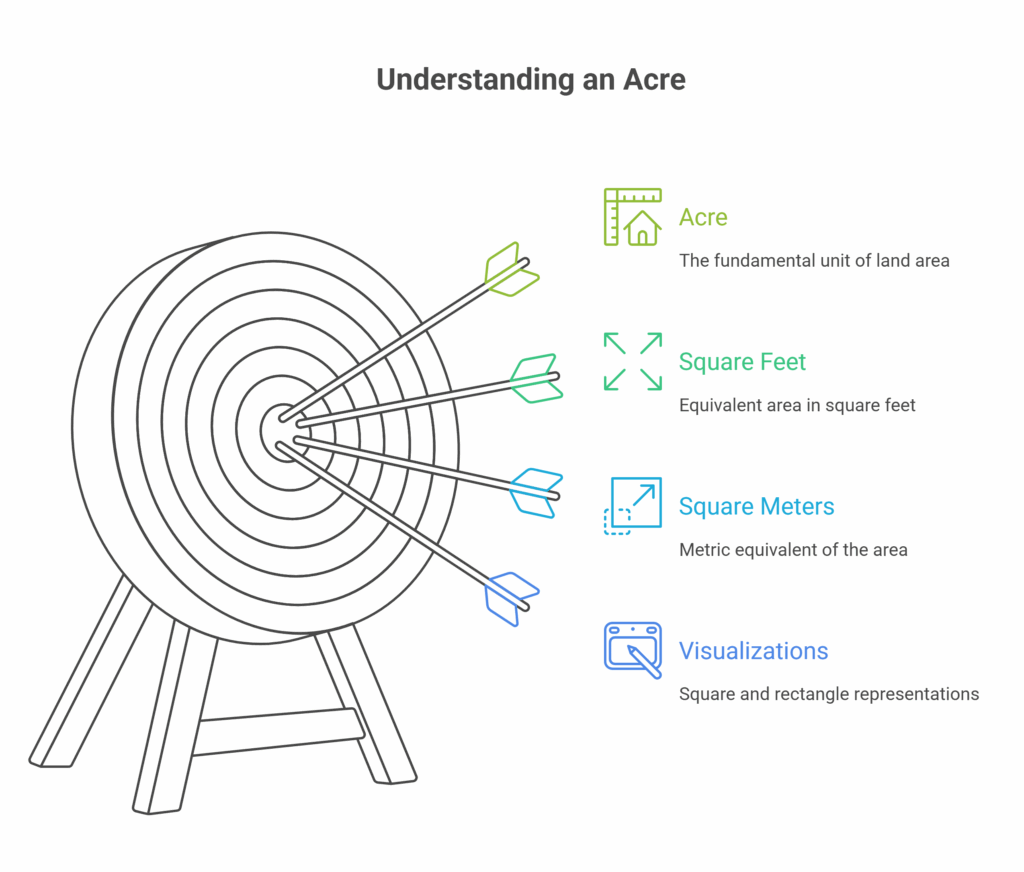Quick Answer: How Big Is an Acre of Property?
“How Big Is an Acre of Property?” is a common question for anyone exploring real estate, farming, or land development. Simply put, an acre measures 43,560 square feet, which is about the size of a football field without the end zones. To visualize it, imagine 16 tennis courts laid out together or about 75% of a soccer field. An acre is large enough to build a spacious single-family home with a big yard, a small farm, or even a community garden.
Knowing “How Big Is an Acre of Property?” helps buyers, sellers, and investors understand the true scope of space they’re dealing with, turning abstract numbers into practical land-use possibilities.
Now let’s dive deeper.

What Is an Acre?
An acre is a unit of land area used in the imperial and U.S. customary systems. It is primarily used in countries like the United States, the United Kingdom, and Canada. One acre is equal to 43,560 square feet.
If you want a more visual comparison, imagine a standard American football field (excluding the end zones), which is about 48,000 square feet. An acre is just slightly smaller than that. So, when someone says they have an acre of land, think of a football field with a bit shaved off the end.
Acre in Different Dimensions
An acre doesn’t have to be a perfect square or rectangle. It can take on different shapes and configurations. However, if it were a perfect square, each side would be roughly 208.71 feet long. If it’s a rectangle, it could be 66 feet wide by 660 feet long, which is another traditional configuration known as a “chain by furlong.”
Some common layouts include:
- 1 acre square: 208.71 ft × 208.71 ft
- 1 acre rectangular: 66 ft × 660 ft
- Half-acre: 21,780 square feet
- Quarter-acre: 10,890 square feet
How Does an Acre Compare to Other Units?
Understanding an acre becomes easier when you compare it to more familiar land sizes.
- 1 acre = 0.4047 hectares
- 1 acre = 4,840 square yards
- 1 acre = 43,560 square feet
- 1 acre = 1/640 of a square mile
These measurements help contextualize how much space you actually get with one acre of land. For example, if you know how large your yard is in square feet, you can compare it to an acre to get a better sense of scale.
What Can You Fit on an Acre of Land?
Many people wonder what kind of developments or structures can fit on an acre of property. Here are a few real-world examples:
- Single-Family Homes: Depending on local zoning laws and setback requirements, you could fit between 3 and 5 standard-sized homes on one acre, assuming each home takes up about 8,000 to 12,000 square feet including the yard.
- Parking Spaces: A typical parking space is about 162 square feet. You could theoretically fit over 260 parking spaces on a single acre.
- Gardens or Farms: An acre is plenty of space for a modest-sized community garden or even a small urban farm. You could grow a variety of crops, raise chickens, or even set up a small greenhouse.
So, if you’re considering buying land to build on or for agricultural purposes, an acre gives you a lot of room to work with.
Residential vs. Commercial Acre Usage
The utility of an acre differs significantly depending on whether it’s zoned for residential or commercial use.
- Residential Acreage: Homeowners usually look for acreage in the context of how much yard space they’ll have. An acre can support a large home, a pool, garage, and still offer room for a backyard and garden.
- Commercial Acreage: For developers or businesses, an acre might be used for office buildings, warehouses, or parking lots. Knowing the dimensions helps in planning and ensuring the land meets local codes.
How Acreage Affects Property Value?
Size matters in real estate—more land typically means more value. However, this depends on a few key factors:
- Location: A one-acre lot in downtown Austin is far more valuable than a one-acre lot in a rural part of Texas.
- Zoning Regulations: The purpose for which the land can be used also influences its value.
- Utilities and Access: Acreage with access to roads, water, sewer, and power lines is typically worth more than undeveloped or inaccessible land.
If you’re buying or selling property, especially in growing cities like Pflugerville, understanding the acreage helps you price or evaluate the land appropriately.
How to Measure an Acre of Property?
While property lines and official land surveys are the most accurate way to determine the size of a parcel, there are tools and methods for approximating an acre:
- Google Maps or GIS Tools: Online tools can help you measure land virtually by drawing boundaries and calculating square footage.
- Plat Maps: These documents outline land divisions in neighborhoods and developments.
- Hiring a Surveyor: This is the most accurate method. A professional can mark exact boundaries, especially useful if you plan to build or fence your property.
Final Thoughts
Whether you’re a homeowner, investor, or developer, knowing how big an acre is can make a big difference in making informed real estate decisions. It helps you determine property value, plan usage, and understand what you’re buying or selling.
And if you’re in Pflugerville and considering a property sale or want to explore your options, it’s good to know how your land size impacts its marketability. We understand that dealing with real estate transactions can be overwhelming, but that’s where we come in. We buy houses Pflugerville, including those sitting on an acre or more, and offer fast, fair cash deals.
Call us anytime at 713-561-5162 or connect with us on our website and we’ll lay out all of your options for your specific situation.
